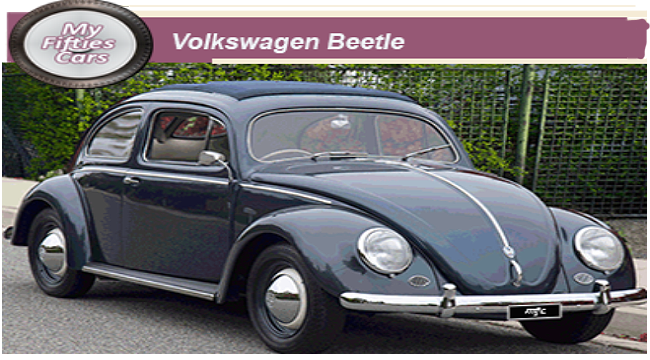
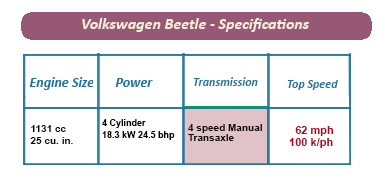 ithout question, the people's car" the direct translation of Volkswagen, brought low-cost motoring to millions in postwar West Germany and the rest of Western Europe.
It also brought it much faster than it would have, although there is no escaping the uncomfortable fact that the Beetle was developed primarily under the auspices of the Nazi party during the Thirties.
In 1933, Adolf Hitler had just risen to power and in of his first speeches in front of a captivated audiences laid out his plans for the future of the German road system dominated by a high-speed highway network known as "Autobahnen," where the "people's car" would be able to travel.
ithout question, the people's car" the direct translation of Volkswagen, brought low-cost motoring to millions in postwar West Germany and the rest of Western Europe.
It also brought it much faster than it would have, although there is no escaping the uncomfortable fact that the Beetle was developed primarily under the auspices of the Nazi party during the Thirties.
In 1933, Adolf Hitler had just risen to power and in of his first speeches in front of a captivated audiences laid out his plans for the future of the German road system dominated by a high-speed highway network known as "Autobahnen," where the "people's car" would be able to travel.
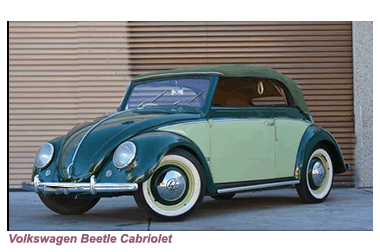 To make his dream a reality, Hitler called in Frederick Porsche, one of Germany's most talented car designers and handed him a simple assignment.
To make his dream a reality, Hitler called in Frederick Porsche, one of Germany's most talented car designers and handed him a simple assignment.
 To make Porsche's task that little more challenging, the Volkswagen needed to be fitted with an air-cooled engine to stand up to the freezing temperatures, particularly in the North of the country.
After several years of feverish activity, by late 1936, the final prototypes were ready, and by the following year, a few Volkswagens were produced, most of them distributed to mid-level officials of the Nazi party.
To make Porsche's task that little more challenging, the Volkswagen needed to be fitted with an air-cooled engine to stand up to the freezing temperatures, particularly in the North of the country.
After several years of feverish activity, by late 1936, the final prototypes were ready, and by the following year, a few Volkswagens were produced, most of them distributed to mid-level officials of the Nazi party.
![]()
With the outbreak of World War Two, Volkswagens were manufactured for military use and fitted with larger (1131-cc) engines.
At the end of the war, passenger-car, production began almost immediately with most of the first models produced going to British forces. It was only in 1950, after control of the company was handed back to West German management did domestic sales begin to pick up.
E arly VW models had a split-oval rear window, with a thick pillar between the tiny panes, making reversing the car a real challenge.
arly VW models had a split-oval rear window, with a thick pillar between the tiny panes, making reversing the car a real challenge.
American cars had abandoned running boards before World War II, but VWs kept them—though they weren't the kind that anyone could stand on.
Early post-war examples of the VW were pretty rudimentary in design, with a number of anomalies, which added to the car's charm but not necessarily its safety levels.
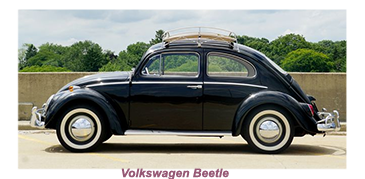 The most outstanding was that the " Beetle's " petrol tank placed under the hood, which had to be raised with each fill-up.
The most outstanding was that the " Beetle's " petrol tank placed under the hood, which had to be raised with each fill-up.
 Petrol gauges did not become a feature until the early Sixties, causing a fair amount of uncertainty and anxiety among drivers.
Petrol gauges did not become a feature until the early Sixties, causing a fair amount of uncertainty and anxiety among drivers.
Volkswagen played their part in alleviating the uncertainty, if not partially, by installing a separate reserve tank, which held an extra gallon or so- to be used only in the cae of emergency.
.
Despite its quirks and shortcomings, demand for the VW Beetle never waned during the Fifties.
![]()
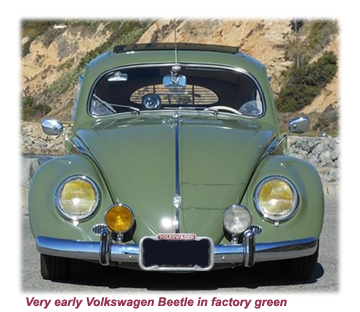 To maintain the impetus VW embarked on a seemingly never-ending succession of improvements—some significant were added through the Fifties and Sixties, meaning that Beetle enthusiasts could readily trace the car's evolution.
To maintain the impetus VW embarked on a seemingly never-ending succession of improvements—some significant were added through the Fifties and Sixties, meaning that Beetle enthusiasts could readily trace the car's evolution.
Some of the more significant advances included the launch of a convertible version in 1949, produced for Volkswagen by the Karmann coachbuilding firm who would later design the Karmann Ghia coupe and convertible.
A synchronised gearbox (except for first gear) began to be fitted, from 1952 models onwards, while the original split back window was replaced by a single oval pane the next year.
D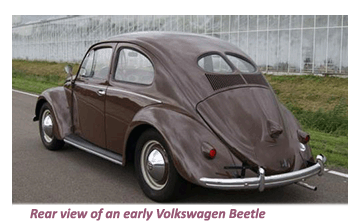 ual combination tail/stop lights were installed that same year, replacing the former single fender lamp. The often-problematic turn-signal switch was moved from the dashboard to alongside the steering wheel.
ual combination tail/stop lights were installed that same year, replacing the former single fender lamp. The often-problematic turn-signal switch was moved from the dashboard to alongside the steering wheel.
A more substantial (1192-cc) engine replaced the original 1131-cc unit for 1954, boosting output from 30 to 36 horsepower, levels that would not be increased until 1961. For the first time that year, the Beetle could be started by a key, instead of the earlier pushbutton starter which was notoriously problematic.
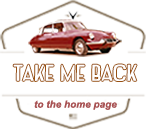 Throughout the remainder of the Fifties, the Volkswagen Beetle retained its status as the best-selling sedan in Europe and remained top of the list for many years to come.
Throughout the remainder of the Fifties, the Volkswagen Beetle retained its status as the best-selling sedan in Europe and remained top of the list for many years to come.
Despite its troubled beginnings, the Beetle had earned and retained its place in history.


